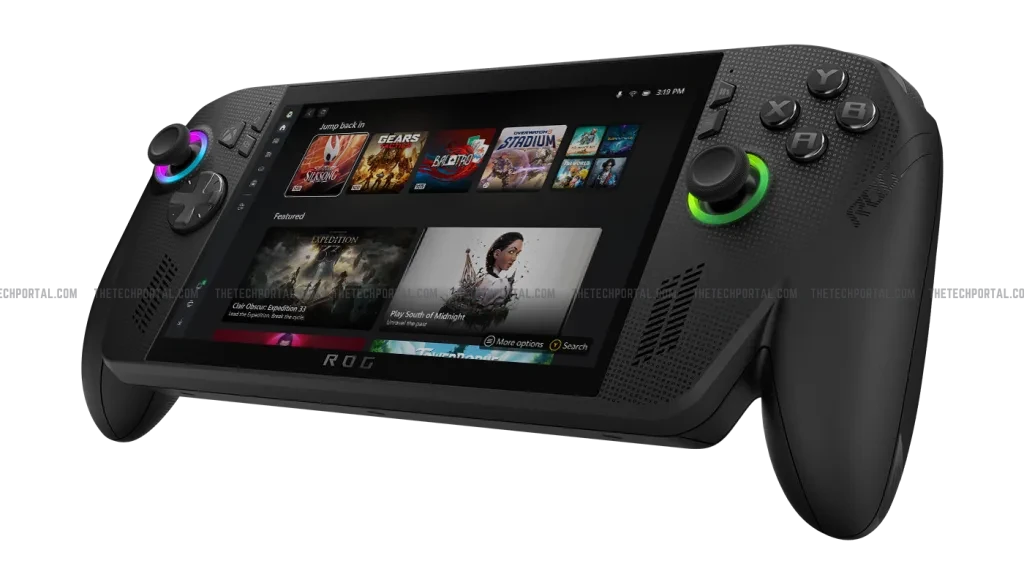
Asus and Microsoft are officially set to launch their new line of handheld gaming PCs, the ROG Xbox Ally and ROG Xbox Ally X, on October 16, both of which operate on a customized version of the Windows 11 Home operating system. The official prices of the devices are yet to be revealed, and the gadgets will be available in Australia, Denmark, France, the US, the UAE, and multiple other markets, before a China launch next year.
The core premise of these devices is to merge the extensive game library of the Windows PC ecosystem with the user-friendly interface of a gaming console. By default, the handhelds boot directly into an optimized, full-screen Xbox-style user interface, circumventing the standard Windows desktop environment. Microsoft also brings a newly optimized Windows 11 experience for handheld devices into the two new gadgets. This custom user interface, which will boot directly from the start, aims to bypass the cumbersome desktop environment and provide a seamless, controller-first navigation system.
“Together with ASUS, we are launching the ROG Xbox Ally and ROG Xbox Ally X on October 16. Since unveiling the ROG Xbox Ally handhelds, the community’s excitement and anticipation have been nothing short of inspiring, and we’re excited to bring you a whole new way to experience the joy of gaming—with the people you want, anywhere you want. These devices deliver an era of handheld gaming that makes it easier than ever to access your favorite games from Xbox, Battle.net, and other leading PC storefronts wherever you go. Whether you’re experiencing the crisp, colorful skateparks of Tony Hawk’s Pro Skater 3 + 4 or diving into the dynamic, immersive action of Gears of War: Reloaded, the Xbox Ally and Xbox Ally X are built to give you the freedom to play your way, anytime, anywhere,” the tech titan announced in an official statement.
The new handhelds are structured to meet different performance and pricing tiers. The ROG Xbox Ally is positioned as the more accessible entry point, utilizing an AMD Ryzen Z2 A processor, which includes a 4-core, 8-thread Zen 2-based CPU and an 8-core RDNA 2 GPU. It is paired with 16GB of LPDDR5X-6400 RAM and a 512GB SSD. This configuration is optimized for solid gaming performance at 720p resolution and provides a cost-effective solution for a broad audience. Both devices will also come with an enhanced Game Bar overlay.
In contrast, the ROG Xbox Ally X is a high-performance model designed for demanding gamers. It is powered by the more advanced AMD Ryzen AI Z2 Extreme processor, which features an 8-core, 16-thread Zen 5-based CPU and a 16-core RDNA 3.5 GPU. With 24GB of faster LPDDR5X-8000 RAM and a larger 1TB SSD, the Ally X is built to handle modern titles at 1080p and higher graphical settings. A key component of its processor is a dedicated neural processing unit (NPU), which will enable future AI-driven features. The Ally X also includes a larger 80Wh battery, an increase from the base model’s 60Wh, to support its more powerful components. Both models feature a 7-inch, 1080p IPS display with a 120Hz refresh rate.
To further improve usability, Microsoft has launched its Handheld Compatibility Program, a verification system similar to Valve’s. The program will categorize games with two labels: “Handheld Optimized,” for titles that work perfectly out of the box, and “Mostly Compatible,” for games that may require minor in-game setting changes. Additionally, Microsoft is implementing an advanced shader delivery system for these devices, which preloads a game’s shaders during the download process to reduce loading times and minimize performance stuttering as well.





